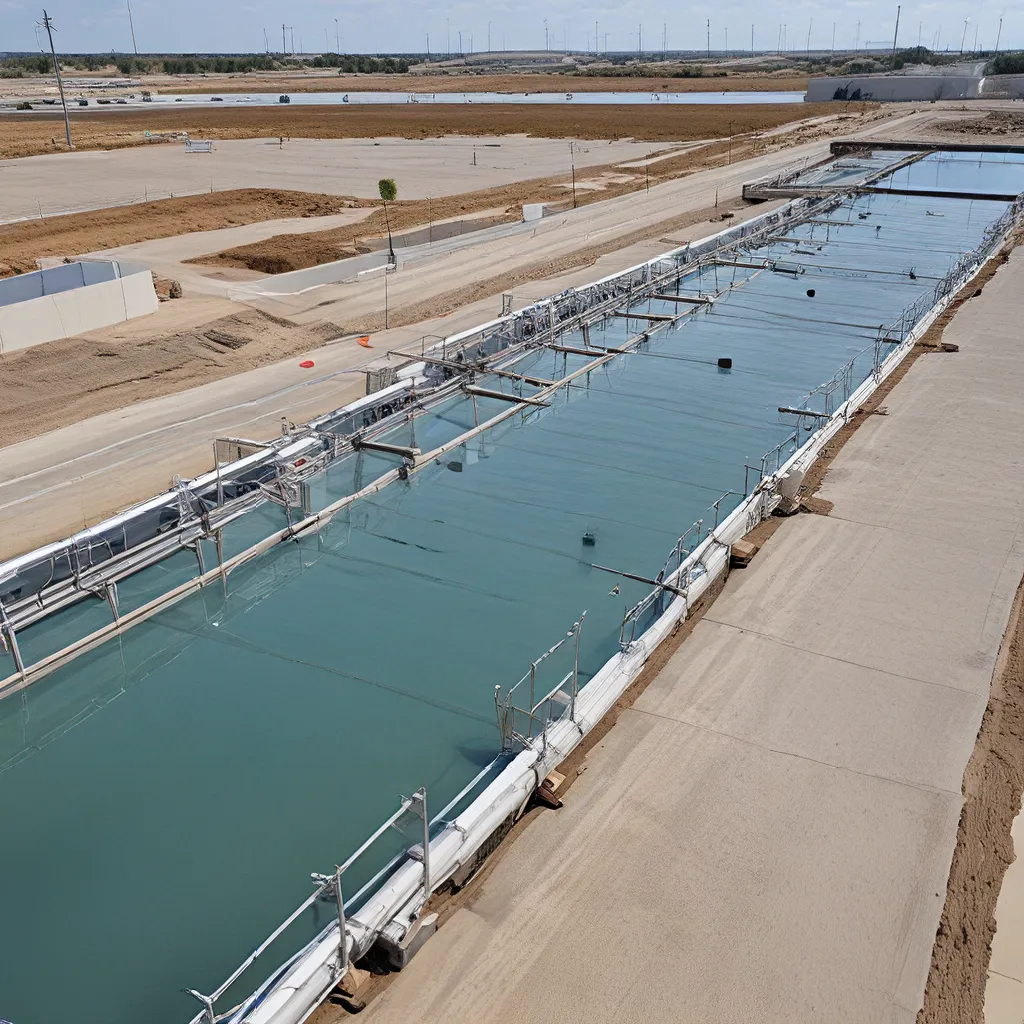
The Membrane Revolution: Unlocking the Potential of Water Reuse
As the global population continues to grow and the demand for clean water rises, the need for innovative solutions to water scarcity has never been more pressing. Fortunately, the field of membrane technologies has been undergoing a remarkable transformation, offering new possibilities for enhancing water reclamation and advancing sustainable water management practices.
Membrane-based separation processes have long been recognized as a promising approach for water treatment and purification. These technologies leverage the selectively permeable nature of membranes to remove contaminants, salts, and other undesirable substances from water, effectively transforming wastewater into a valuable resource. However, the traditional membrane systems have faced certain limitations, such as high energy consumption, fouling, and the need for frequent maintenance.
But the tide is turning, and the water industry is witnessing a membrane revolution. Researchers and engineers have been working tirelessly to overcome these challenges, pushing the boundaries of membrane technology and unlocking new opportunities for enhanced water reclamation.
Membrane Advancements: Boosting Efficiency and Sustainability
One of the most significant advancements in membrane technologies has been the development of high-performance, energy-efficient membranes. These innovative materials, often based on novel polymers or advanced nanomaterials, are designed to reduce the energy required for water filtration and purification. By optimizing the membrane structure and composition, researchers have been able to increase the permeability of the membranes, allowing for higher water flux and lower operating pressures.
Emerging membrane technologies, such as forward osmosis and membrane distillation, have also shown great promise in the field of water reclamation. These novel approaches leverage natural osmotic and thermal gradients, respectively, to drive the separation process, reducing the energy consumption compared to traditional pressure-driven membrane systems.
Moreover, the incorporation of advanced materials, like graphene-based or ceramic membranes, has further enhanced the performance and durability of these systems. These cutting-edge membranes demonstrate improved resistance to fouling, higher selectivity, and longer operational lifespans, making them increasingly attractive for water treatment applications.
Tackling Fouling and Extending Membrane Lifespan
One of the persistent challenges in membrane technology has been the issue of fouling, where contaminants and organic matter accumulate on the membrane surface, reducing its efficiency and requiring frequent cleaning or replacement. However, researchers have developed innovative strategies to address this problem.
Advances in membrane surface modification and anti-fouling coatings have enabled the creation of membranes with enhanced self-cleaning abilities and reduced susceptibility to fouling. These membranes can actively repel or degrade organic matter, minimizing the need for chemical cleaning and extending the membrane’s operational lifespan.
Furthermore, the integration of intelligent control systems and real-time monitoring technologies has revolutionized the way we manage membrane-based water treatment processes. By continuously tracking the performance parameters and detecting early signs of fouling, these systems can trigger targeted cleaning or optimization strategies, ensuring optimal efficiency and minimizing downtime.
Unlocking the Potential of Water Reuse
The advancements in membrane technologies have opened up a world of possibilities for water reuse and recycling. These innovative systems can now effectively remove a wide range of contaminants, including microplastics, pharmaceuticals, and heavy metals, transforming wastewater into a valuable resource that can be safely reused for various applications.
Membrane-based water reclamation facilities are being increasingly adopted, allowing municipalities and industries to reduce their freshwater consumption and alleviate the strain on limited water sources. By recycling and reusing water, these systems contribute to a more sustainable and resilient water management ecosystem.
Moreover, the integration of membrane technologies with other advanced treatment processes, such as biological treatment and advanced oxidation, has further enhanced the overall water purification capabilities. This holistic approach ensures the removal of a diverse range of contaminants, making the reclaimed water suitable for a wide range of applications, including agricultural irrigation, industrial processes, and even potable water supply.
Navigating the Future of Water Reclamation
As we look to the future, the continued advancements in membrane technologies hold immense promise for transforming the water industry and addressing the global water scarcity challenge. Researchers and engineers are exploring new frontiers, such as bio-inspired membranes, nanocomposite materials, and integrated membrane-based systems, to push the boundaries of water reclamation even further.
However, it’s important to note that the adoption and implementation of these cutting-edge technologies are not without their own set of challenges. Regulatory frameworks, public acceptance, and economic feasibility will all play a crucial role in shaping the widespread adoption of water reclamation practices.
Nonetheless, the momentum is building, and the promise of a future where water is no longer a scarce resource is within our grasp. As we continue to innovate and collaborate, the advancements in membrane technologies will undoubtedly be a driving force in our quest for sustainable and resilient water management solutions.
So, let’s dive deeper into the fascinating world of membrane technologies and explore how they are transforming the way we perceive and manage our most precious resource – water.